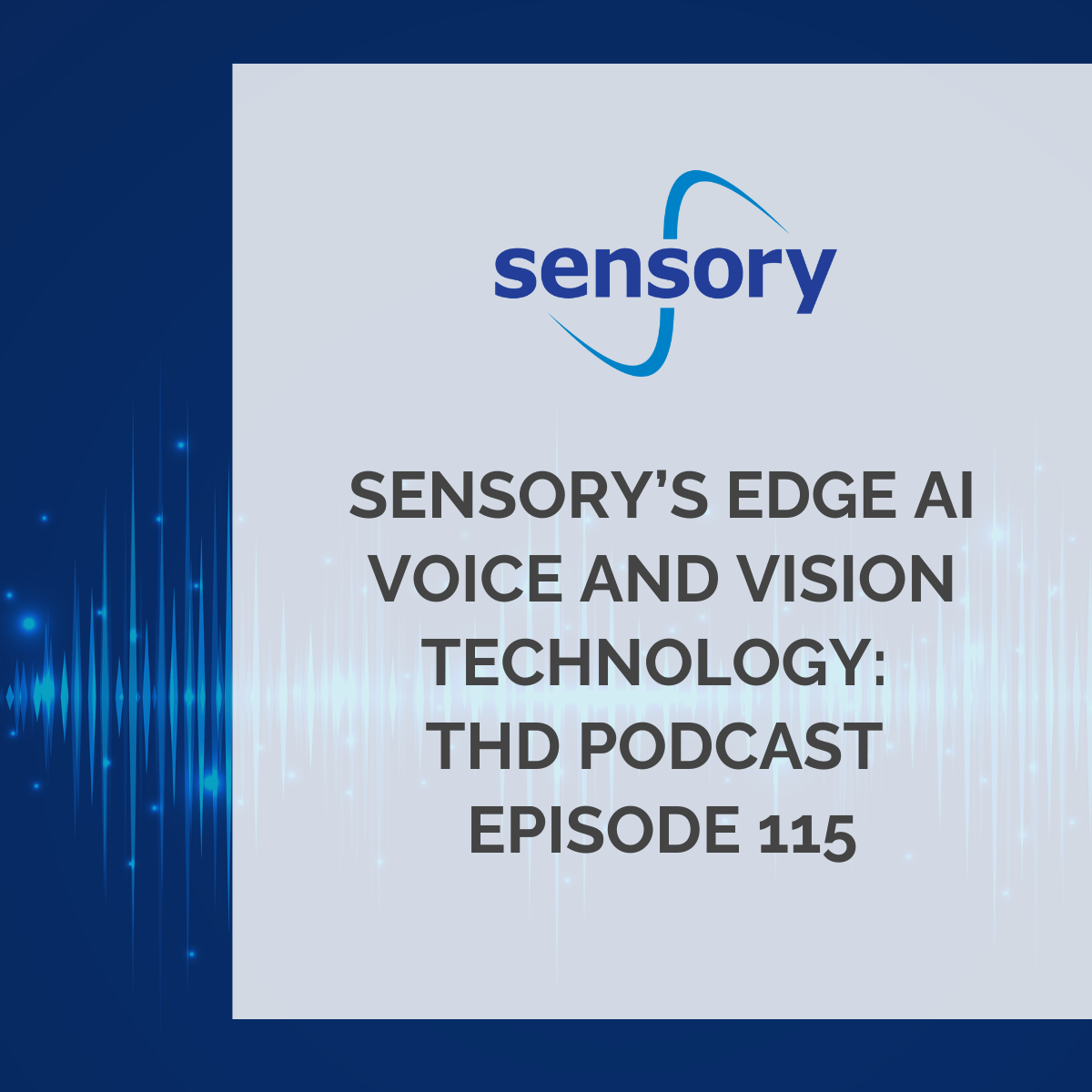In a recent episode of the THD podcast, Jeff Rogers (Sensory’s VP of Sales and Marketing), joined the show to discuss Sensory’s cutting-edge AI solutions for voice and vision. With over 30 years of experience in the industry and technology embedded in more than 3 billion products, Sensory is a pioneer in on-device AI solutions that prioritize privacy, reliability, and cost-effectiveness. Listen to the full episode or keep reading for the key insights from the interview!
AI on the Edge: Why It Matters
A core theme of the discussion was Sensory’s focus on edge AI. Unlike traditional cloud-based solutions, Sensory’s on-device approach offers several advantages:
- Enhanced Privacy: All processing happens on the device, ensuring user data is never transmitted to the cloud.
- Increased Reliability: Devices powered by Sensory’s technology continue to function even without internet connectivity.
- Cost Savings: On-device processing eliminates cloud infrastructure costs, which can be significant at scale.
Custom Wake Words and TrulyNatural Speech-to-Text (STT)
Sensory’s expertise in voice technology was a major focus of the conversation. Known for its ability to create custom wake words or hotwords, Sensory’s TrulyNatural (TNL) speech-to-text (STT) technology allows brands to use their own names for voice activation. Unlike traditional STT solutions that require a cloud connection, TNL STT can run directly on a device—even on a CPU without a powerful GPU.
“With Sensory’s TrulyNatural, we don’t even need a powerful GPU to run this,” Jeff Rogers highlighted, emphasizing the efficiency and versatility of the technology.
Hybrid Solutions for Advanced Capabilities
While Sensory’s technology is focused on the edge, the company also recognizes the value of cloud-based large language models (LLMs). This episode discussed the hybrid approach for core functions, like wake word detection and STT, to occur on the device while leveraging the cloud for more advanced natural language processing.
Data Privacy and Security
Data privacy is a growing concern in the tech industry, and Sensory’s on-device approach offers a compelling solution. Since all processing happens locally, user data is never exposed to cloud servers, reducing the risk of accidental recordings or data breaches.
“With Sensory, it’s complete privacy. Everything stays on device,” Rogers explained.
Beyond Voice: Sound Identification and Biometrics
In addition to voice recognition, Sensory offers sound identification technology capable of detecting specific sounds (like sirens or baby cries) and biometric solutions for face and voice recognition. These capabilities make Sensory’s technology versatile across multiple industries, including automotive, medical, consumer electronics, and more.
VoiceHub: Democratizing Voice Development
One of the standout tools discussed in the episode was Sensory’s VoiceHub—a powerful tool that allows developers to quickly create and customize wake words and voice command sets. This significantly reduces the time and complexity of adding voice capabilities to products.
Conclusion: A Smarter Approach to AI
Sensory’s focus on on-device AI, combined with their hybrid capabilities, positions them as a leader in the rapidly evolving world of artificial intelligence. From custom wake words and TrulyNatural speech-to-text to sound identification and biometrics, their solutions offer the perfect balance of privacy, reliability, and scalability.
For companies looking to integrate advanced AI without sacrificing data privacy or incurring high cloud costs, Sensory’s technology offers a clear path forward. As Jeff Rogers emphasized, “We’re definitely known as the kings of AI on the edge.”
To learn how Sensory’s technology can fit your use case, contact us or request VoiceHub access.
